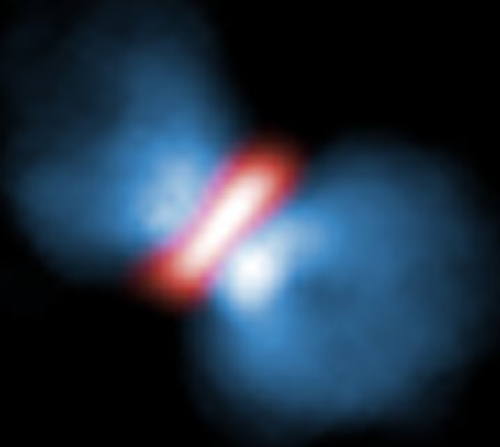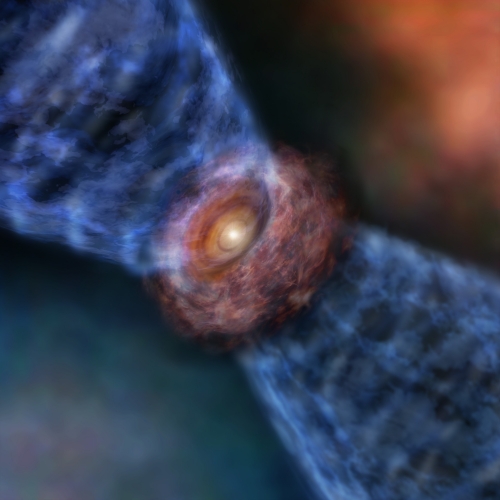研究成果 Research Results
- TOP
- News
- Research Results
- How massive young stars are born
How massive young stars are born
2017.06.21Research ResultsPhysics & Chemistry
One of the outstanding problems in star-formation theory concerns the transfer of angular momentum such that mass can accrete onto a newly born young star. From a theoretical standpoint, outflows are predicted to play an essential role in angular momentum transfer. However, little quantitative discussion on outflow launching mechanisms has been presented for high-mass young stars due to a lack of observational data. Here the research group led by Assistant Prof. Tomoya Hirota of National Astronomical Observatory of Japan and Associate Prof. Masahiro Machida at Kyushu University present a clear signature of rotation in the bipolar outflow driven by Orion Source I, a high-mass young star, using the Atacama LargeMillimeter/Submillimeter Array (ALMA). Observation reveals a velocity gradient perpendicular to the outflow axis which is consistent with that of the circumstellar disk. The launching radii and outward velocity of the outflow are estimated to be >10 au and 10 km/s, respectively. Thus, present results provide new evidence of a rotating outflow directly driven by the magneto-centrifugal disk wind launched by a high-mass young star.
For more information, see https://www.nature.com/articles/s41550-017-0146
Hirota et al. :“Disk-Driven Rotating Bipolar Outflow in Orion Source I” Nature Astronomy. (DOI:10.1038/s41550-017-0146).
For details, see https://alma-telescope.jp/news/press/orion-201706

Fig. 1.
ALMA observation result. Red region corresponds to the circumstellar disk. Blue regions correspond to outflows (Credit: ALMA (ESO/NAOJ/NRAO), Hirota et al.)).

Fig. 2.
Schematic view of Orion Source I (Credit: ALMA (ESO/NAOJ/NRAO))
Journal Reference
Disk-driven rotating bipolar outflow in Orion Source I, ,Nature Astronomy, 10.1038/s41550-017-0146Research-related inquiries
- TOP
- News
- Research Results
- How massive young stars are born































